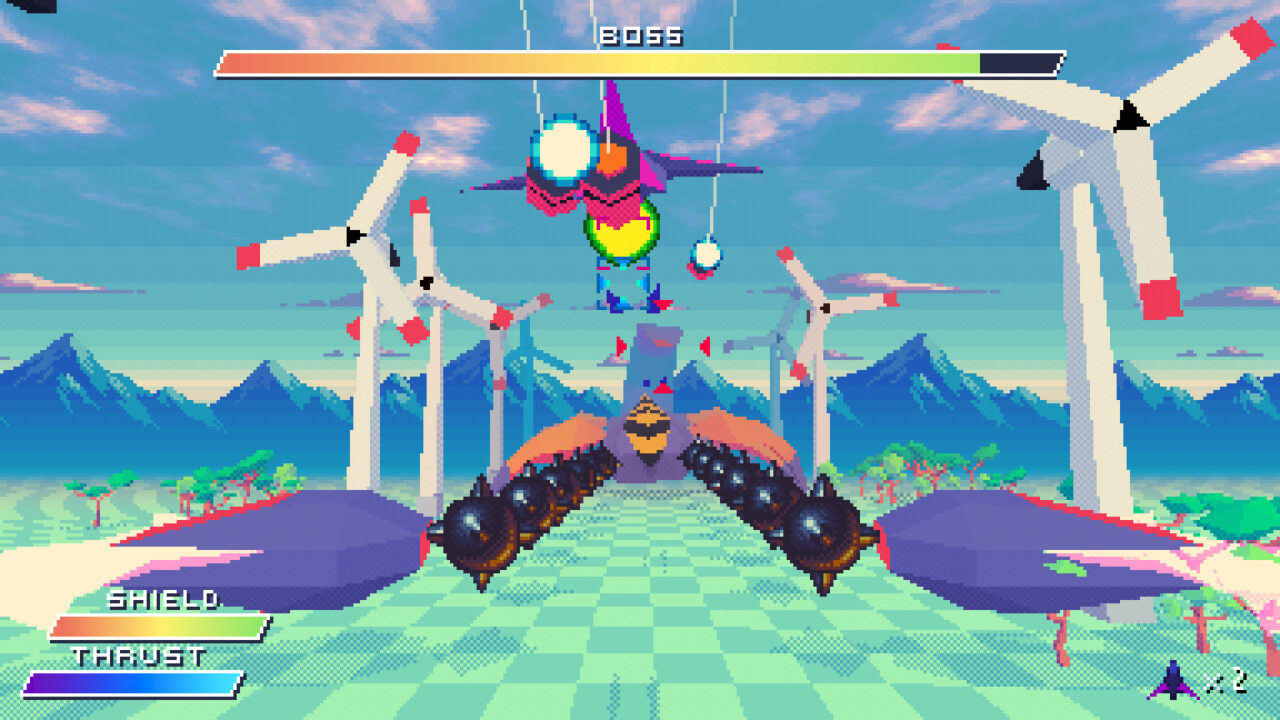Guest review by FKAGundam
To talk about 3D space rail shooter is to talk about a very niche genre that emerged – and defined an era – in the 90’s. For who got the opportunity to experience the classic Star Fox for the Super Nintendo Entertainment System in 1993, the gameplay and graphics combined into an experience that will never be replicated again. With Ex-Zodiac, the atmosphere of a rail shooter is present, while the nostalgia takes ahold just by looking at the screen. Given how the genre is all but locked to one franchise, Ex-Zodiac braves forth and showcases what feels like a passion project, and it provides a hit of nostalgia to go along with a memorable experience.

Mechanics:
As previously stated, for those who played Star Fox – and for those who have played a remastered/emulated version of the game – are familiar with how a rail shooter plays. The maneuvering in Ex-Zodiac plays and executes the same as other projects in the same vein as Star Fox, though with more tact and precision than the originator. There’s a significant focus on speed over defensive and offensive gameplay in Ex-Zodiac in comparison to Star Fox, which isn’t necessarily a change in the formula, however.
Unlike in the Star Fox series, the boosting in Ex-Zodiac doesn’t seem to be a crucial part of the mechanics, rather it plays like a defensive mechanic as does the slowing down mechanic. Knowing when to boost and when to slow down is the core mechanic of the rail shooters, and the execution of that in Ex-Zodiac is done perfectly. The learning curve is there, but it’s not one that requires having been born decades prior.

Gameplay:
When it comes to these types of space rail shooters, the best way to summarize the gameplay is simply saying it’s fun. To maneuver across the screen, shooting your guns at your enemies in front of you, all while maneuvering your ship across levels and withstanding enemy waves creates a good time that no other video game genre can offer. There are no guarantees that the game will be easy – even Star Fox had its fair share of frustrating moments – but there’s a sense of nostalgia that carries over onto this area which outweighs the negatives.
The most significant gameplay feature I found was the boss fights. There’s a rhythm to each encounter, with a built-in layer of difficulty that requires plenty of maneuvering and button input. The main factor is timing, which must be juggled alongside shooting and avoiding bombs across the level, which makes for intriguing encounters.

Graphics:
The biggest takeaway from Ex-Zodiac is the old school polygon 3D graphics. The remodeling of the Super FX graphics chip is picture perfect; it makes you feel like your PC has the chip enabled at high resolution. Whether or not the graphics enable a sense of nostalgia, there is no doubt that the charm of rail shooters is rooted on the graphics, or in this case, the polygons on the screen. Fans of the polygon aesthetic found in old consoles will absolutely enjoy seeing this style of graphics being showcased in 2025, decades after the format was abandoned.
Conclusion:

Though some levels in Ex-Zodiac can be extremely repetitive, the game still has plenty to go before it captures – or surpasses – the very essence of Star Fox. The combat feels at times dull, specifically the rockets not having enough power against some enemies. Perhaps my biggest gripe is how there’s a cooldown on the barrel roll mechanic, which just feels alienating, and defeats about half of the purpose of what rail shooters are meant to be.
The prospect of Ex-Zodiac improving is very appealing, as it is now, there are some flaws that can be worked on and can turn the game into the perfect version of a rail shooter. The passion is palpable, which is perhaps the source of this project. All in all, this game is a proper tribute to the beloved rail shooting genre, and maybe the perfect tribute to a bygone era.
Disclaimer: A review key was provided

